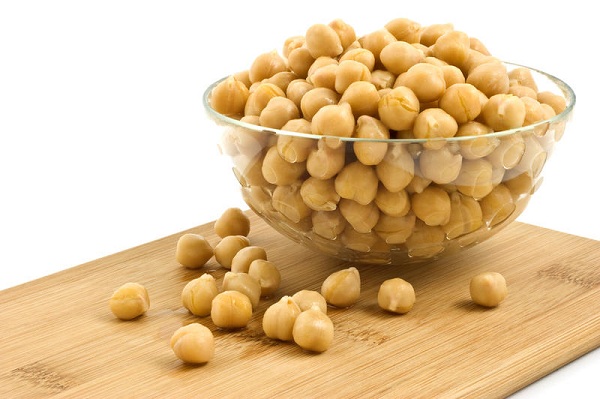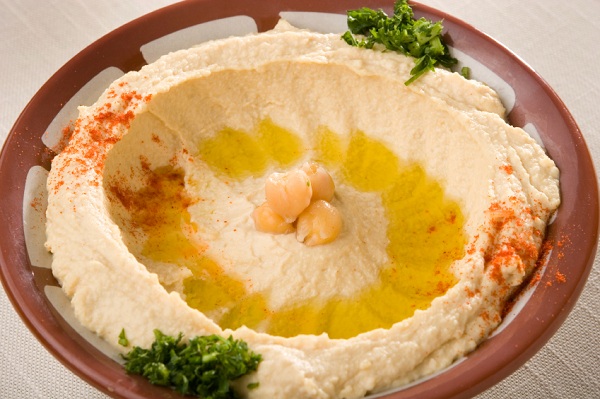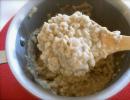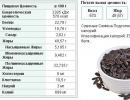Step by step recipe for making hummus at home
There are dishes whose cooking process is very different from today's popular methods of creating sous-molecular culinary creations. The highlight of these dishes is the opportunity to enjoy the taste of any one product, perhaps only slightly shaded by additional and, most importantly, unobtrusive components. This includes all kinds of mousses, velouté, as well as the undoubted favorite of many culinary specialists - hummus.
An excellent accompaniment to all kinds of meat dishes, an indispensable component of the vegetarian table, the ideal companion for freshly baked bread is so uncomplicated that anyone with the necessary ingredients can make hummus at home.
The basic recipe traditionally includes six ingredients: chickpeas, olive oil, garlic, lemon juice, tahini, salt. Of all the above clarifications, the use of only such an ingredient as lemon juice does not require. The use of other components of hummus requires special explanations.
chickpeas

The preparation of hummus is unthinkable without the main ingredient - chickpeas, which cannot be replaced by any other legumes. Chickpeas must be cooked.
- Traditionally, boiled chickpeas are used to make hummus. Dry grains should be soaked for a couple of hours in plenty of cold water (there should be about 3 cm of water above the surface of the peas). You can leave the soaked chickpeas overnight. In the morning, the water should be drained, the peas should be washed well and boiled in a large amount of water under the lid of the pan for about an hour and a half. There should be 3 times more water in the pan than chickpeas. The readiness of the product can be checked by rolling one of the peas between the fingers - a thin skin will easily separate from a fully prepared one. Despite the duration of cooking, this method does not require labor at all.
- To save time, pre-soaked chickpeas can be boiled in a slow cooker. It is better to do it in accordance with the instructions for each specific appliance, on average it will take about 50 minutes to cook.
- An express method for making hummus is to use canned beans. World-famous chef Jamie Oliver recommends using canned food, as he is sure that such chickpeas are no different from freshly cooked ones, but much less time is spent on cooking the dish. However, in the countries of the Middle East, where hummus is a national dish, and its recipe is passed down from generation to generation, only freshly cooked chickpeas are considered “real” and “correct”.
tahini

Another essential ingredient of the dish is tahini. Tahini is a sesame paste that can be prepared at home if desired. It is necessary to mix lightly roasted sesame seeds and sesame oil in a blender. It is the taste of sesame that is the flavor nuance that distinguishes real, basic hummus.
Olive oil
Take olive oil. Extra virgin olive oil is ideal - it will add another flavor to the dish. The amount of oil in the recipe can be adjusted to your own taste. In addition, when preparing tahini on your own, olive oil can be replaced with sesame oil.
Salt
Often, instead of regular salt, cooks use finely ground sea salt. In Israel, where eating hummus is traditional, kosher salt is used.
Garlic
Garlic should be passed through a garlic press. However, some cooks advise chopping garlic with a knife, and then rubbing it with salt, and then adding it to the rest of the ingredients. As a result of such actions, the salt is saturated with garlic aroma, and the taste of hummus becomes more intense.

Cooking
- 150 g dry chickpeas
- 3 tbsp tahini
- 3 garlic cloves
- 5-6 tbsp olive oil
- 2 tsp salt
- 3 tbsp freshly squeezed lemon juice
Pre-soaked chickpeas should be boiled in the manner indicated above. Ready chickpeas become completely soft inside, but the peas retain their shape well. Chickpeas need to be pureed. To do this, remove the thin skin from the grains. It is quite easy to do this: the liquid in which the chickpeas were boiled must be drained into a separate container, the grains should be thrown into a colander and washed several times with ice water - the peel itself will separate from the peas from the temperature difference. You should sort through the finished chickpeas to make sure that the shell is missing from all the peas; otherwise, some grains must be skinned by hand.
Peeled chickpeas can be ground in a blender or food processor. Then you need to add lemon juice, tahini, salt with garlic, as well as 50-100 ml of water left after boiling the chickpeas to the puree. After that, mix the puree again with a blender or combine, periodically adding olive oil. As soon as the ingredients are completely mixed, and the mass becomes homogeneous and acquires the desired density, the hummus can be served on the table, after sprinkling it with olive oil.

The taste of a classic dish can be varied with the help of various additives. Spices should be sprinkled on hummus that is already ready to serve: in this case, the amount of spices can be easily adjusted, and their aroma will not “override” the taste of the rest of the components. Spices such as paprika, sumac, fried cumin, cumin, fried garlic, ground black pepper are perfect for hummus. The finished dish can be sprinkled with pine nuts or chopped parsley - this will bring a touch of freshness to the rather “smooth” taste of chickpeas.
As you know, hummus is present among the dishes of most eastern national cuisines. Moreover, at present, the once exotic phenomenon continues to “conquer” new territories, covering entire continents. In fact, nowadays it has become possible to purchase hummus in almost any supermarket. But not everyone is in a hurry to do this - due to the simplicity of the cooking process, the recipe for this oriental dish can be found in many home cookbooks. Undoubtedly, home-made hummus is much tastier than industrially prepared hummus.
It should be remembered that in the preparation of this simple, but very tasty dish, there are some secrets that allow you to achieve the perfect result:
- During cooking, chickpeas should never be salted, otherwise the peas will simply remain very hard and will not boil.
- Some chefs advise adding a pinch of soda to the water in which chickpeas are boiled - the grains will cook much faster. There is another opinion: soda added during cooking destroys the vitamins contained in legumes.
- To soften the shells of chickpeas, soda can be added not during cooking, but to the water in which the product is soaked.
- It is allowed to cook dishes from boiled chickpeas that have not been peeled from shells. Hummus in this case will turn out to be heterogeneous, which will adversely affect its taste.
- After washing with cold water, the chickpeas cool down. If you warm it up a little in the microwave before pureeing, the hummus will be more fluffy and smooth.
- There is an opposite opinion: when grinding chickpeas, a few ice cubes should be added to the blender. The ice helps to homogenize the grains, resulting in a more uniform puree texture.
- Some cooks advise using tahini, made from unroasted sesame seeds. This makes the taste of the dish more refined and delicate.
- It is allowed to include 100 g of Turkish yogurt in the ingredients. The texture of the hummus will become more creamy and the taste will take on a creamy hue.
![]()
Alternatively, you can leave a couple of handfuls of chickpeas unpuréed. Some of them can be used to decorate a dish, and some can be frozen and, defrosting as needed, added to various vegetable salads.
It is recommended to serve hummus immediately after preparation, as over time, chickpea puree thickens and loses its original exquisite taste.





